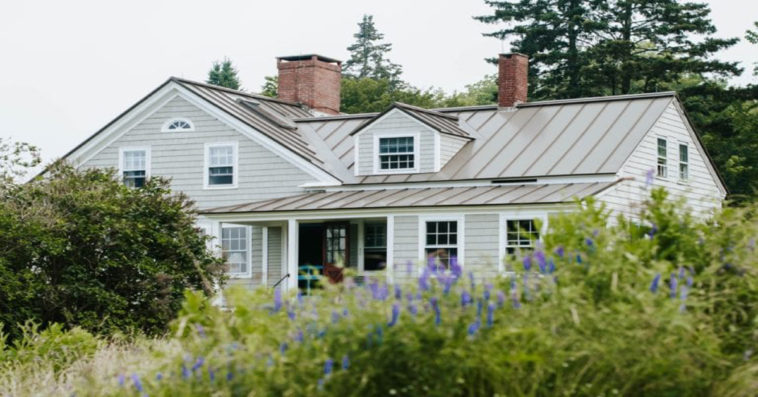Materials for any industry, including homes, should be sustainable.
We are all aware that sustainability is the way of the future. Although many articles discuss topics such as the growing number of electric vehicles or how we can reduce greenhouse gases, adopting these very same practices when building (or renovating) your home is just as important.
For example, did you know that up to 20 percent of greenhouse gas emissions result from the carbon footprint of the average American home? Not only should we all be concerned about this staggering figure, but the results are likely to be felt for decades if action is not taken.
Sustainable Materials for Your Home
The good news is that many sustainable materials can be used as viable alternatives. Let us look at a handful of relevant examples as well as the benefits of each.
Engineered Timber Products:

Domestic structures use a massive amount of wood. From the framing and exterior walls to interior elements such as stairways and wooden floors, this places a very real strain upon the environment. There are two main problems to address:
- Many types of wood deplete the natural resources of forests, leading to a rise in airborne carbon dioxide content.
- Wood that is required to travel a great distance is associated with a higher carbon footprint.
While using reclaimed wood throughout the home is a viable option, a number of companies also offer engineered wood flooring. This is particularly useful, as engineered wood represents a much more environmentally friendly option and it is still available in countless styles. Cork and bamboo are other interesting choices to consider, as both can be easily replenished within natural forests.
Insulation Materials:
Studies have found that heating and cooling a home can account for as much as 40 percent of its total energy consumption. This is why choosing the right type of insulation is important. However, there are several problems with traditional approaches. One issue is that insulation contains volatile organic compounds (VOCs). These chemicals are gradually released into the air, causing the nearby environment to become polluted. Furthermore, some VOCs have ever been shown to cause certain types of cancer.
One interesting approach involves the use of wool and even hemp. These substances can help to increase the amount of heat that homes retain during the year’s colder months. Both hemp and wool can be purchased as compressed boards; helping to simplify the installation process. Furthermore, research has recently shown that hemp (when made into a format known as “hempcrete”) is fireproof. This is a nice added safety bonus.
Roofing:

In terms of roofs, some of the most traditional materials are some of the most sustainable. Clay and slate are two well-known examples. The reason behind this observation is that not as much energy is used in the production of these materials. The same cannot be said for alternatives such as copper, concrete, zinc, and modern shingles.
Let us also not fail to mention that slate and clay can withstand the elements and that their natural properties will help to reduce the amount of heat from your roof that may otherwise be lost. These substances are extremely durable and come in a kaleidoscope of tones. So, it is easy to match the exterior appearance of your home.
Windows and Doors:

As this article points out, the notion of “green” building has existed since as far back as the 1970s. The only issue was that at the time, there were relatively few materials that were affordable to the average homeowner. The good news is that technology has come a long way in the past four decades.
Although many windows and doors are associated with plastic and PVC frames, these substances are not environmentally friendly. They are challenging to recycle they emit volatile organic compounds, as previously mentioned, over time. Wood, however, is an excellent option to consider. Assuming that wood is properly painted and maintained, window and door frames can last for extremely long periods without experiencing any serious issues.
Double glazing is likewise a great modern innovation. This type of glazing provides a superior thermal barrier against outside temperatures when used within door and window frames. Not only can homes remain warmer in the winter, but they will feel cooler in the summer. Double glazing is likewise a great option due to its acoustic properties; it helps to reduce exterior noise pollution.
Precast Concrete:
Are you planning a large renovation, or will you soon be building a home from scratch? If so, opting for precast concrete as a foundational material is a wise choice. This type of concrete requires little energy to process and is normally shipped from local sources. Many of these slabs contain hollow centers or voids containing fillers such as foam. This helps to reduce their overall weight and thus, they can serve many purposes during the initial phases of construction.
Plant-Based Paints and Stains:

Paints and stains will often contain chemical compounds which are harmful if inhaled. Assuming that a home is not properly ventilated, this can present a very real health issue. Organic and plant-based alternatives offer a number of benefits including:
- No hazardous materials.
- They require less energy to produce.
- They are non-toxic substances (important when dealing with children or pets).
- They are biodegradable.
- Many are priced similarly to their chemical counterparts.
Once again, you will be able to choose from a wide array of colors, styles, and finishes.
Sustainability Today for a Greener Tomorrow:
All of the recommendations outlined above will provide your home with an undeniably sustainable edge. Let’s also remember to keep in mind that many of these represent one-off solutions. In other words, they can become permanent additions to your home, and they will normally not require any future upgrades.
As the impact of climate change becomes clear, it only stands to reason that adopting a sustainable mindset at the present will help to ensure a bright future. Please do not hesitate to bookmark this article for future reference or if you wish to use it in the form of a checklist during an upcoming construction project.
About the Guest Author
Martin O’Callaghan is the President of Wood Flooring Ireland who are passionate about creating sustainable decor for homes and businesses.




